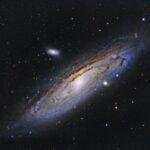
The Grand Canyon is one of the world’s most famous natural wonders. It is a mile deep, 18 miles wide, and over 270 miles long.
With its remote location, it isn’t surprising that it’s the second-most visited national park in the United States.
Canyons are deep and dramatic gorges in the earth, formed over time by erosion from a river or similar waterway. There are an estimated 250 canyons on our planet.
The Grand Canyon is a spectacular natural wonder located in Northern Arizona.
Its rocks and how they were formed are some of the most well-studied in the world, making it a popular destination for tourists from all over the globe – over 5 million people visit every year!
How was the Grand Canyon formed?
The Grand Canyon is one of the most famous geological features in the world. Located in northern Arizona, it is a massive canyon that was carved out by the Colorado River over the course of millions of years.
The exact process by which the canyon was formed is still the subject of debate among scientists, but there are a few theories that are widely accepted.
One theory suggests that the canyon was formed by a process known as differential erosion.
This occurs when different types of rock are eroded at different rates by the river. The harder rock is more resistant to erosion and therefore remains in place longer, creating a deep groove in the landscape.
Over time, the river continued to cut deeper into the soft rock, eventually forming the canyon we see today.
Another theory posits that the Grand Canyon was formed by a series of large floods that swept through the area over millions of years.
These floods would have rushing waters that were capable of carving out huge channels in the landscape. As the floods receded, they would leave behind a deeply eroded canyon.
Regardless of how it was formed, the Grand Canyon is an awe-inspiring sight that is sure to leave any visitor speechless.
- Read also: How Was Machu Picchu Built
- Read also: How Old Are the Pyramids
Was the grand canyon filled with water?
No, the Grand Canyon was not filled with water. It was formed by erosion from the Colorado River over millions of years. The river currently runs through the bottom of the canyon, but it is not deep enough to fill it entirely.
In fact, the Grand Canyon has never been filled with water in recorded history. However, there have been instances where the river’s water levels have risen high enough to temporarily cover some of the canyon’s rocks and formations.
These occasions are rare, though, and the Grand Canyon remains primarily a dry feature of the landscape.
What are the rock layers part of the Grand Canyon?

| Rock Layers | Time (Years) | Thickness (Meters) | Depositional Type |
| Vishnu Schist | 1.7 Billion Years | 2000 Meters | Metamorphic |
| Sixtymile Formation | 550 Million Years | 50 Meters | Sedimentary |
| Hakatai Shale | 270 Million Years | 300 Meters | Sedimentary |
| Bass Limestone | 270 Million Years | 100 Meters | Sedimentary |
| Coconino Sandstone | 270 Million Years | 200 Meters | Sedimentary |
| Hermit Shale | 270 Million Years | 100 Meters | Sedimentary |
| Supai Group | 270 Million Years | 250 Meters | Sedimentary |
| Redwall Limestone | 270 Million Years | 150 Meters | Sedimentary |
| Temple Butte Formation | 270 Million Years | 50 Meters | Sedimentary |
| Muav Limestone | 270 Million Years | 150 Meters | Sedimentary |
| Bright Angel Shale | 270 Million Years | 100 Meters | Sedimentary |
| Tapeats Sandstone | 570 Million Years | 200 Meters | Sedimentary |
| Grand Canyon Supergroup | 1.2 Billion Years | 2000 Meters |
Metamorphic and Igneous rock formations
|
Is the Grand Canyon the largest canyon in the world?
No, the Grand Canyon is not the largest canyon in the world.
The Yarlung Tsangpo Grand Canyon in Tibet is considered to be the largest, with a length of about 160 kilometers (100 miles) and a depth of over 5500 meters (18,000 feet).
The Grand Canyon, on the other hand, has a length of about 446 kilometers (277 miles) and a maximum depth of 1800 meters (6000 feet).
However, the Grand Canyon is often considered to be one of the most impressive and visually stunning canyons in the world. Its sheer size and colorful rock formations make it a popular destination for visitors from all over.
What animals live in the Grand Canyon?
There are a variety of animals that live in the Grand Canyon, including coyotes, mule deer, bighorn sheep, mountain lions, and various types of birds and bats.
The water-dwelling Colorado River fish species include humpback chub, razorback sucker, and flannelmouth sucker.
There are also a number of endangered species that can be found in the Grand Canyon, such as the California condor and Kanab ambersnail.
The diverse range of habitats within the canyon, from its rocky cliffs to its lush riparian areas, allows a diverse array of animals to thrive.
- Read also: Who Discovered America
- Read also: Who Discovered The North Pole

Final words
The Grand Canyon is one of the most iconic natural wonders in the United States. For millions of years, the Colorado River has been slowly carving out this massive gorge, and the result is a landscape that is truly breathtaking.
The canyon itself is over a mile deep in places, and its sheer cliffs provide visitors with stunning views.
While the exact process by which the Grand Canyon was formed is still debated by scientists, there is no doubt that it is an amazing example of the power of erosion.
As more people visit the Grand Canyon each year, it remains one of the best-loved destinations in the country.


